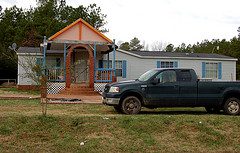Decrepit trailers in unkempt parks, located in neighborhoods in which few would care to live. Such is the image conjured in the minds of too many Americans when asked to describe manufactured homes.
But this stereotype could not be further from the truth in today’s world of factory-built housing. For reasons of cost, convenience and community, millions of families are starting to see that manufactured homes as their best option in today’s marketplace. Better yet, these homes are typically energy efficient, and increasingly, they are indistinguishable from their site-built counterparts.
Nevertheless, too many still fail to see the value in manufactured homes as sources of affordable homeownership. This statement applies both to the value placed on these homes by the public, as well as the actual, monetary value placed on these homes by their appraisers. A series of challenges face appraisers of these homes – ranging from titling regulations to public biases – each of which will need to be confronted head-on if we are to accurately account for the value of these homes as a stock of affordable homeownership options.
As one example of these challenges, the U.S. Department of Housing and Urban Development’s (HUD) definition of “manufactured housing” is not consistently used by every state, agency or lender. Given the proliferation of other types of factory-built housing since the 1976 HUD Code, many appraisers find it difficult to discern between “manufactured housing,” “modular homes” and other non-traditional homes. As another example, home appraisers make their assessments of the value of a home by comparing it to similar homes. Yet in many communities, there aren’t comparable manufactured homes with which to compare, while current regulations prohibit or discourage appraisers from comparing manufactured homes to similar, site-built counterparts. This often results in the manufactured home in question being undervalued.
Luckily, these challenges aren’t without solutions. A new report authored by Robin Lebaron of the Fair Mortgage Collaborative and published today by CFED, outlines concrete methods for improving the appraisal process and revealing the real value of manufactured homes. Real Homes, Real Value: Challenges, Issues and Recommendations Concerning Real Property Appraisals of Manufactured Homes recommends, among other things:
-
Working with stakeholders to arrive at clearer and more consistent definitions of manufactured housing. -
Providing greater flexibility within the rules that govern appraisals of manufactured homes. -
Developing better sources of data to facilitate appraisers’ work and improve the accuracy of valuations. -
Improving appraisers’ education about manufactured housing.
To be sure, these steps will take time. The process of implementing these reforms should be rigorous and methodical, and should bring together the slate of stakeholders who work in the manufactured housing and real estate appraisal fields. Federal officials, industry leaders, nonprofit practitioners, policymakers, appraisers and others should sound the call for improvements to the current process. Such a goal is essential in ensuring that manufactured homes are valued appropriately so they can be an asset, rather than a liability, for those who dwell within.
To learn more about the importance of the appraisal process and its unique influence on manufactured homes, visit CFED's Resource Directory and download Real Homes, Real Value today.
(Photo of single-wide with portico by Flickr user taberandrew, CC-BY.)





Until we commissioned this report, it was hard to the many and various ways that “need fixing” relative to appraisals of manufactured homes. Robin LeBaron has done an excellent job in breaking down and specifying the specific issues, and in laying out a clear set of recommendations for improvements and solutions.